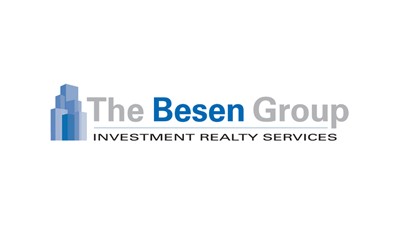Northern Manhattan Densifies And Gentrifies Like Surrounding Boroughs, Proves It’s Still A Great Bet

New York City’s population continues to grow rapidly. Its 8.5 million people outstripped the Census Bureau’s 2020 projection in 2014, and the city’s expected to surpass the old 2030 estimate by 2020.
This creates complex issues for urban planners, who scramble to find creative solutions to the myriad problems associated with unprecedented density. It’s also accelerated the transformation of the landscape, with an influx of capital funding ambitious and attractive redevelopment.
The effects of rapid gentrification are easy to see in Long Island City, Jamaica, Woodside, Prospect Heights, Bed-Stuy and the South Bronx. The last bastions of seediness in northern Manhattan are being replaced by renewal projects that boast transportation, affordable living options, culture, parks and neighborhood conveniences.
The outer boroughs are getting a lot of (well-deserved) attention, but northern Manhattan’s renaissance is just as impressive.

Tenants
At least for now, northern Manhattan has the least expensive housing on the island.
“In general, studios can be had for $1,400-1,600, a one-bedroom for $1,800-2,200 and a two-bedroom for $2,400-2,600,” Besen Group senior director Shallini Mehra (pictured left, with executive director Amit Doshi) said, "which is 25-40% cheaper than comparable apartments below 96th Street."
Landlords
On the other side of the market, northern Manhattan is “sought for its cash flow stability and significant rental upside,” Mehra tells us. “Vacancy is low, at 2-3%.”
Architecture
Northern Manhattan also possesses some beautiful, large, pre-war buildings with spacious layouts. One can find different kinds of brownstones, Dutch and Victorian row houses, or French Provincial, Gothic and Italianate townhouses. Up in Hudson Heights are Art Deco and Tudor-styled buildings.
New construction attempts to emulate these “authentic” characteristics to imbue their buildings with old-Manhattan charm.

Activity
Earlier this year, Doshi (left), Mehra and director Ronnie Shaban (right), sold 3640 Broadway (below), a 45k SF corner elevator property with strong retail presence.
“The property has over 100 feet of frontage on Broadway, providing tremendous retail exposure,” Doshi said. “The building traded for $16.8M and a gross rent multiplier (the ratio of price to rental income) of 17, reflecting the strength of these types of assets.”
Doshi, Mehra, Shaban and director Ishan Chabra (second from right) also sold 1995 Amsterdam and 457-479-481 West 159th St as a package deal with 64 units and four stores.
“Northern Manhattan investors are definitely paying up to acquire a retail presence as these neighborhoods continue to gentrify,” Shaban said.

Community and Affordable Housing
The northern Manhattan ecosystem has demonstrated a commitment to affordable housing through city-sponsored programs that preserve its rich heritage and diversity.
There are several affordable housing landlords, like Preservation Development Partners, who focus on acquiring housing stock in need of rehabilitation for low-income working families and seniors.
“Renovations and capital improvements go into all of our acquisitions," PDP co-principal Francine Kellman said, "and the regulatory agreements which keep the rents affordable are extended by an additional 40 years.”
"The city plays a critical role by providing us with tax-exempt bond financing and tax credits,” co-principal Brian Raddock added.
Neighborhood
Northern Manhattan has its fair share of great parks, recreation centers and universities, which enhance the environment and imbue it with a residential, family feel.

Columbia
Columbia University, one of Manhattan's largest real estate owners, has been focused on its West Harlem expansion, which starts at the intersection of West 125th Street and Broadway and spans 17 acres.
The new Manhattanville campus will be open next spring, and includes an array of new buildings, among them the Jerome L. Green Science Center, the Mortimer B. Zuckerman Mindbrain Behavior Institute and a community health center spanning about 450k SF.
There are three other buildings coming to this campus, the Lenfest Center for the Arts (2017), the University Forum and Academic Conference Center (2018), and the new Columbia Business School (2021).
This past fall, Columbia University Medical Center opened its new, 100k SF Medical and Graduate Education building, now known as the Roy and Diana Vagelos Education Center, on Haven Avenue in Washington Heights between West 171st and West 172nd streets. Columbia’s aggregate square footage will grow from 16M SF to 23M SF with all these neighborhood-enhancing additions.
To learn more about this Bisnow content sponsor, click here.

